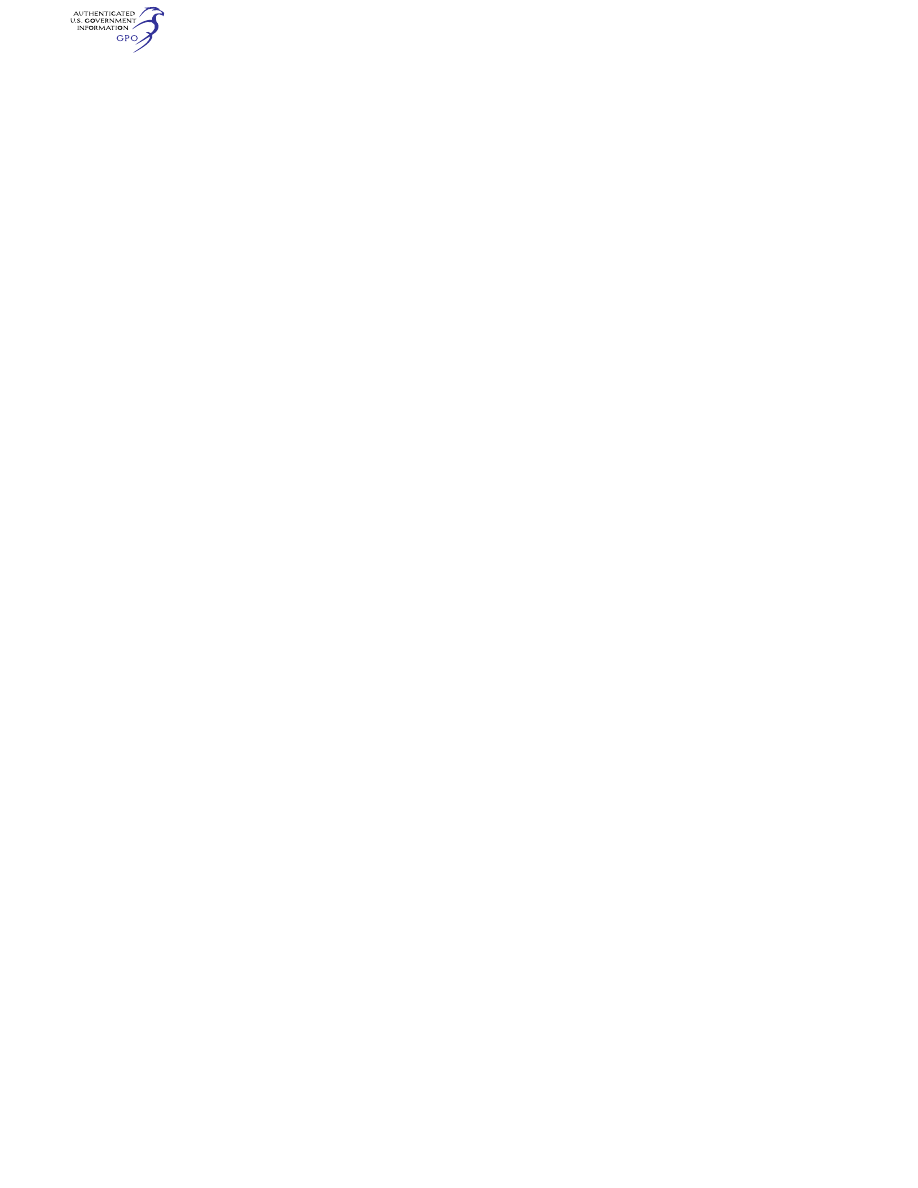
540
14 CFR Ch. I (1–1–24 Edition)
§ 27.1027
(b) Have manual or automatic means
for positive locking in the closed posi-
tion.
[Amdt. 27–20, 49 FR 6849, Feb. 23, 1984]
§ 27.1027
Transmissions and gear-
boxes: General.
(a) The lubrication system for com-
ponents of the rotor drive system that
require continuous lubrication must be
sufficiently independent of the lubrica-
tion systems of the engine(s) to ensure
lubrication during autorotation.
(b) Pressure lubrication systems for
transmissions and gearboxes must
comply with the engine oil system re-
quirements of §§ 27.1013 (except para-
graph (c)), 27.1015, 27.1017, 27.1021, and
27.1337(d).
(c) Each pressure lubrication system
must have an oil strainer or filter
through which all of the lubricant
flows and must—
(1) Be designed to remove from the
lubricant any contaminant which may
damage transmission and drive system
components or impede the flow of lu-
bricant to a hazardous degree;
(2) Be equipped with a means to indi-
cate collection of contaminants on the
filter or strainer at or before opening
of the bypass required by paragraph
(c)(3) of this section; and
(3) Be equipped with a bypass con-
structed and installed so that—
(i) The lubricant will flow at the nor-
mal rate through the rest of the sys-
tem with the strainer or filter com-
pletely blocked; and
(ii) The release of collected contami-
nants is minimized by appropriate lo-
cation of the bypass to ensure that col-
lected contaminants are not in the by-
pass flowpath.
(d) For each lubricant tank or sump
outlet supplying lubrication to rotor
drive systems and rotor drive system
components, a screen must be provided
to prevent entrance into the lubrica-
tion system of any object that might
obstruct the flow of lubricant from the
outlet to the filter required by para-
graph (c) of this section. The require-
ments of paragraph (c) do not apply to
screens installed at lubricant tank or
sump outlets.
(e) Splash-type lubrication systems
for rotor drive system gearboxes must
comply with §§ 27.1021 and 27.1337(d).
[Amdt. 27–23, 53 FR 34213, Sept. 2, 1988, as
amended by Amdt. 27–37, 64 FR 45095, Aug. 18,
1999]
C
OOLING
§ 27.1041
General.
(a) Each powerplant cooling system
must be able to maintain the tempera-
tures of powerplant components within
the limits established for these compo-
nents under critical surface (ground or
water) and flight operating conditions
for which certification is required and
after normal shutdown. Powerplant
components to be considered include
but may not be limited to engines,
rotor drive system components, auxil-
iary power units, and the cooling or lu-
bricating fluids used with these compo-
nents.
(b) Compliance with paragraph (a) of
this section must be shown in tests
conducted under the conditions pre-
scribed in that paragraph.
[Doc. No. 5074, 29 FR 15695, Nov. 24, 1964, as
amended by Amdt. 27–23, 53 FR 34213, Sept. 2,
1988]
§ 27.1043
Cooling tests.
(a)
General. For the tests prescribed
in § 27.1041(b), the following apply:
(1) If the tests are conducted under
conditions deviating from the max-
imum ambient atmospheric tempera-
ture specified in paragraph (b) of this
section, the recorded powerplant tem-
peratures must be corrected under
paragraphs (c) and (d) of this section
unless a more rational correction
method is applicable.
(2) No corrected temperature deter-
mined under paragraph (a)(1) of this
section may exceed established limits.
(3) For reciprocating engines, the fuel
used during the cooling tests must be
of the minimum grade approved for the
engines, and the mixture settings must
be those normally used in the flight
stages for which the cooling tests are
conducted.
(4) The test procedures must be as
prescribed in § 27.1045.
(b)
Maximum ambient atmospheric tem-
perature. A maximum ambient atmos-
pheric temperature corresponding to
VerDate Sep<11>2014
09:06 Jun 28, 2024
Jkt 262046
PO 00000
Frm 00550
Fmt 8010
Sfmt 8010
Y:\SGML\262046.XXX
262046
jspears on DSK121TN23PROD with CFR
